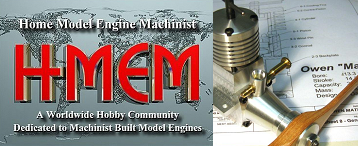Tim Wescott
Well-Known Member
- Joined
- Jun 3, 2018
- Messages
- 328
- Reaction score
- 99
Remember that the most important thing is that the cylinder bore ends up being at right angles to the crankshaft -- things can be offset up or down or right or left or fore or aft and you can compensate. The only thing you can't fix is the crankpin trying to pull the piston somewhere it can't go, and that'll happen if they're not square to one another.













